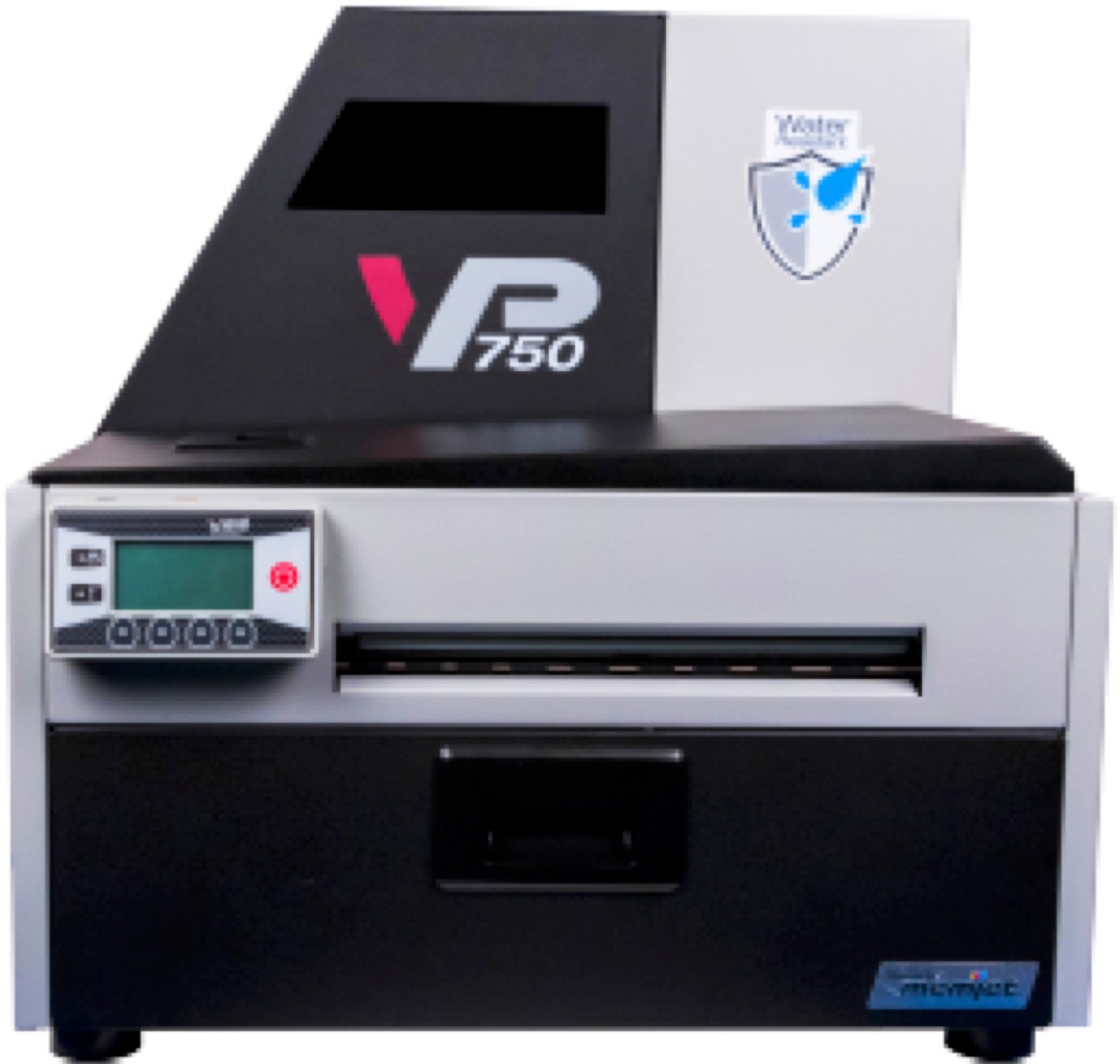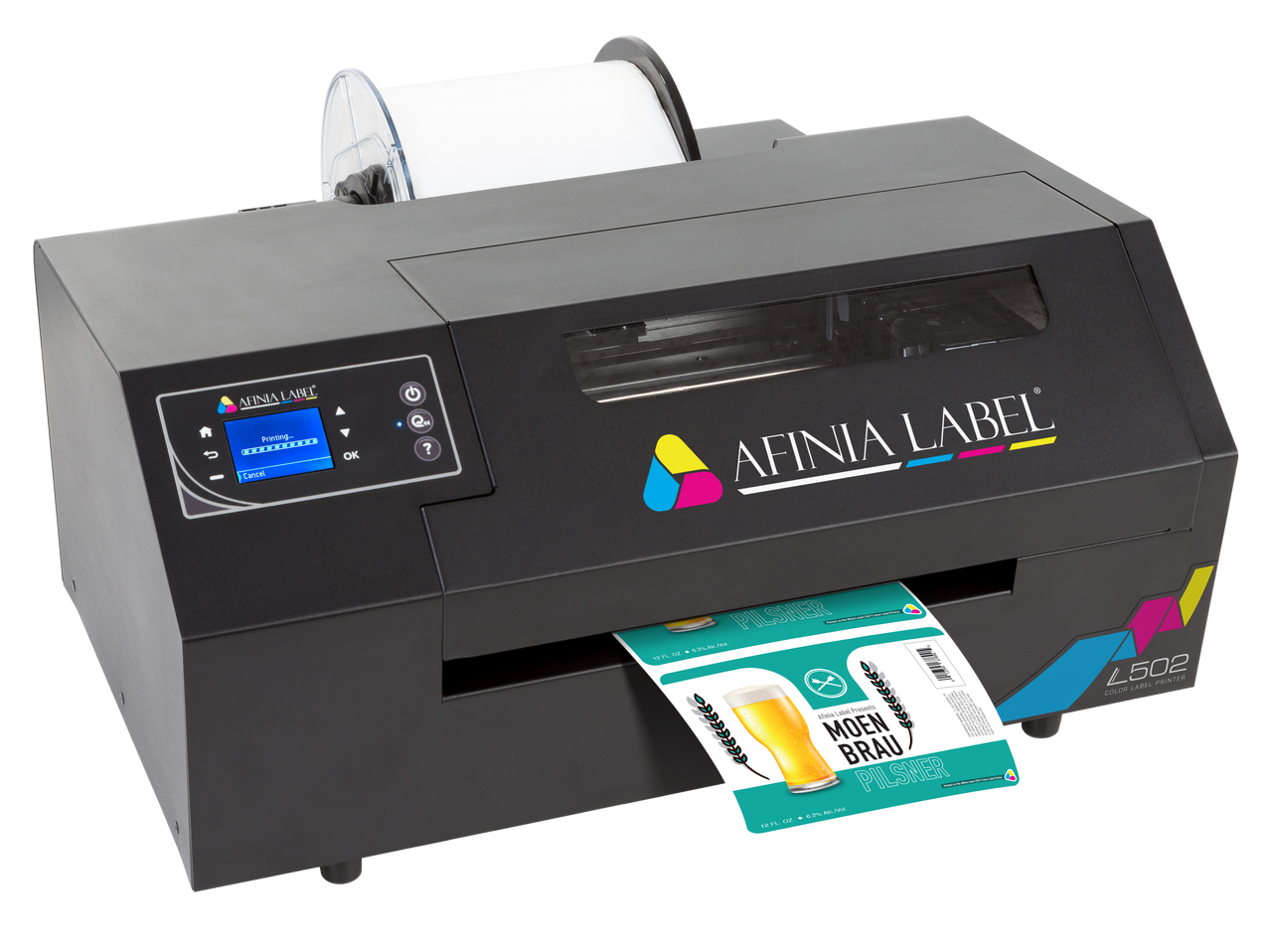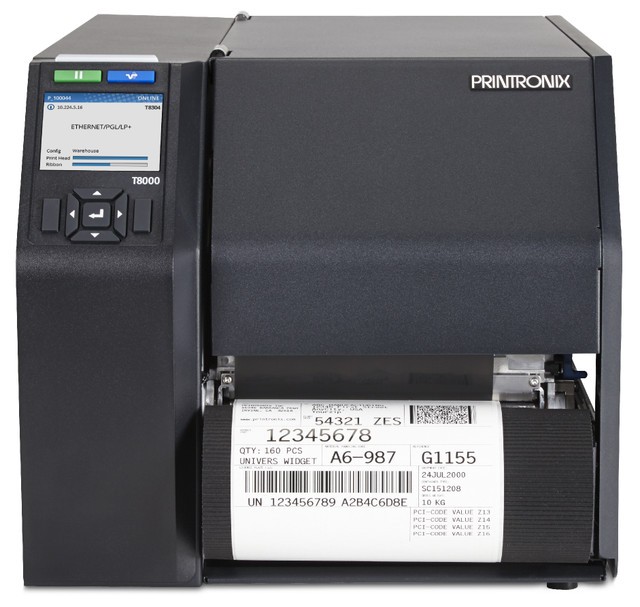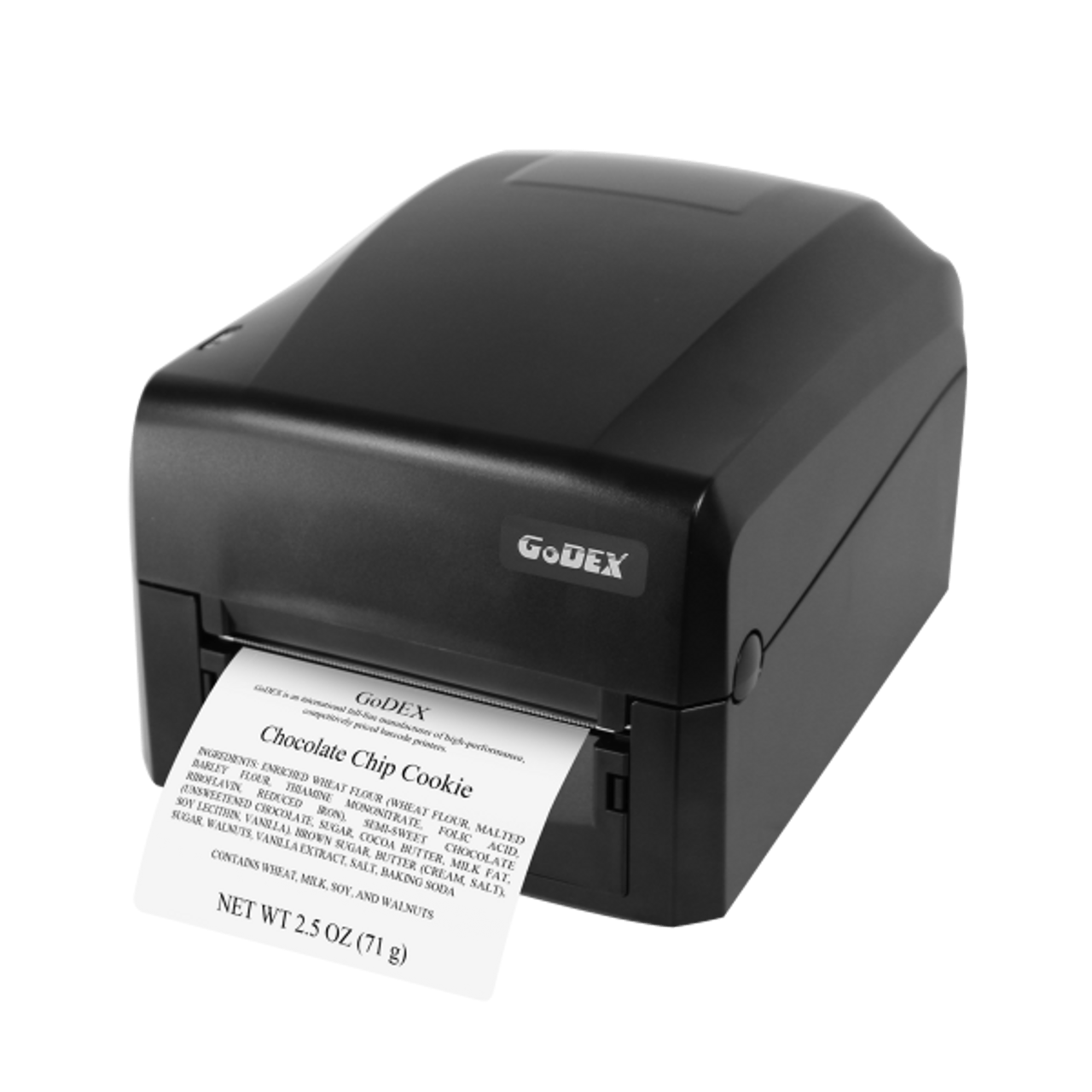How Small Can a Barcode Be Printed Without Losing Quality?
13th Aug 2025
TL;DRBarcode size affects scanability. Shrinking barcodes too much can lead to unreadable or non-compliant codes. X-dimension (bar width) and quiet zones are critical for readability—GS1 recommends 0.264 mm minimum bar width for UPC-A. Print resolution matters: 300+ dpi for thermal printers and 1200+ dpi for inkjet ensures crisp barcodes at small sizes. Material quality affects clarity. Smooth, non-glossy substrates yield better results for small barcodes. Scanner type dictates limits. Laser scanners need wider bars, while 2D imagers and smartphones can read smaller codes. GS1 Canada standards must be followed for UPC, EAN, and QR codes—especially in retail and pharma. Godex GE330: Budget 300 dpi desktop thermal DuraFastLabel.ca offers high-res printers, guidance, and fast shipping across Canada. |
|---|
Suppose you're designing compact product labels or trying to fit barcode tags on limited packaging real estate. In that case, you’ve likely asked yourself: how small can a barcode be printed without compromising quality or scannability? It’s a crucial question for manufacturers, retailers, and label designers alike, especially in industries where space is tight, such as cosmetics, electronics, or pharmaceuticals.
In barcode printing, smaller doesn’t always mean better. While it may be tempting to shrink a barcode to save space, doing so can render it unreadable by scanners or non-compliant with industry standards, such as GS1. The minimum barcode size depends on several factors, including barcode type (e.g., UPC, Code 128, QR), printer resolution (in dpi), label material, and intended scanning method.
What Is the Relationship Between Barcode Size and Print Quality?
When designing product labels or shelf tags, size constraints are common, especially in industries such as cosmetics, electronics, and healthcare. But how small can a barcode be printed without compromising scannability? It’s a critical question for any retailer, warehouse operator, or manufacturer using barcodes to manage inventory or process sales.
The print size of a barcode directly affects how easily it can be scanned. If the barcode is too small, scanners may fail to read it, resulting in operational delays, inventory errors, or non-compliance with retail standards. Understanding the minimum size requirements, based on barcode type and intended scanning method, ensures your barcodes remain functional, regardless of space limitations.
Whether you’re printing UPC-A barcodes for retail shelves or compact QR codes for promotional packaging, maintaining proper dimensions and resolution is key to consistent scanning performance.
How Do Barcode Dimensions Affect Scannability?
Barcodes are machine-readable symbols that rely on contrast, clarity, and spacing. The smallest printable barcode depends on several factors:
-
X-Dimension: This is the width of the narrowest bar in a barcode. It determines the overall size of the symbol and is critical for scan accuracy. Most barcode standards define a minimum X-dimension (e.g., 0.264 mm for UPC-A).
-
Quiet Zones: These are blank spaces before and after the barcode that give scanners room to isolate the symbol. Without them, even a perfectly printed small barcode may not scan.
-
Printer Resolution: A 203 dpi printer has a larger dot size than a 300 dpi or 600 dpi printer. The higher the resolution, the smaller the barcode can be printed accurately.
-
Scanner Type: Laser scanners are more sensitive to narrow bars and require larger symbols. Imaging scanners (used for 2D barcodes) can read smaller symbols, especially on high-resolution prints.
As a general rule:
-
UPC-A: Minimum size is 80% of standard (approx. 29.83 mm wide × 20.73 mm tall).
-
Code 128: Can be printed as narrow as 1 inch if the data is minimal.
-
QR Code: Minimum size is around 10 mm × 10 mm, assuming high-resolution printing and close-range scanning.
What Are the Industry Standards for Minimum Barcode Size?
Organizations like GS1 and government regulators provide precise dimensions based on barcode type, scanner compatibility, and use case (such as retail, warehousing, healthcare, etc.). Adhering to these standards is crucial to ensure your barcodes function reliably at checkout, during audits, or in warehouse automation systems.
Let’s examine the most relevant standards and their implications for Canadian retailers and manufacturers.
1. GS1 Guidelines for Common Barcode Types (UPC, EAN, QR, etc.)
GS1, the global standards organization behind UPC and EAN codes, recommends minimum sizes for each barcode type:
-
UPC-A (Retail)
-
Nominal size: 37.29 mm (1.47") wide × 25.93 mm (1.02") tall
-
Minimum size (80% scale): 29.83 mm × 20.73 mm
-
X-dimension (minimum bar width): 0.264 mm
-
Quiet zones: 1.65 mm on each side
-
-
EAN-13
-
Similar dimensions to UPC-A, but includes an additional digit.
-
Also requires a minimum of 80% scale for reduced space packaging.
-
-
Code 128 (used for logistics and internal tracking)
-
More compact and dense; minimum width varies by encoded data.
-
Ideal for small labels if printed at 300+ dpi.
-
-
QR Codes
-
Minimum size: 10 mm × 10 mm (for low-density data)
-
Must be printed at high resolution with clear quiet zones.
-
2. What Regulatory Requirements Exist for the Canadian Market?
In Canada, barcode size isn’t just a best practice; it can be a regulatory necessity depending on your retail partnerships and province.
-
Scanner Price Accuracy Code (voluntary code adopted by many retailers) demands scannable barcodes for consistent pricing.
-
Quebec’s French language laws often require bilingual labelling alongside barcodes, which affects how much space you have for your label design.
-
Major Canadian retailers (e.g. Walmart Canada, Loblaw) have specific barcode size requirements aligned with GS1 standards. If your barcodes are undersized, your products may be rejected from shelves.
3. What Are the Recommended Barcode Dimensions for Retail Scanners?
Retail POS scanners are designed to read barcodes printed within a certain size range. Shrinking barcodes below the readable threshold can result in misreads or failed scans. Here are scanner-friendly guidelines:
-
Laser scanners: Prefer bar widths (X-dimensions) of at least 0.33 mm
-
Imaging scanners (2D-capable): Can read smaller barcodes, especially at close range
-
Mobile camera scanners (e.g., smartphones): Require higher contrast and slightly larger codes
Recommended minimum sizes (for 100% scan success in retail):
-
UPC-A: ≥ 30 mm width
-
EAN-13: ≥ 31 mm width
-
QR Code: ≥ 12 mm square
The smaller your barcode, the more controlled the scan environment must be, lighting, distance, and scanner resolution all play a role.
4. What Other Factors Affect Barcode Readability?
Even if your barcode meets size standards, print quality and layout can still impact performance. Key factors include:
-
Contrast: Black bars on a white background offer the best readability
-
Resolution: Print at a minimum of 203 dpi; 300+ dpi is preferred for small barcodes
-
Quiet Zones: Always leave blank space (usually 10× the X-dimension) before and after the barcode
-
Surface Material: Glossy or textured labels can distort scanning
-
Damage/Wear: Faded or scratched barcodes can cause misreads
What Factors Affect the Smallest Printable Barcode?

Let’s explore the key factors that determine how small your barcode can be without compromising performance.
1. How Does Material and Substrate Impact Small Barcodes?
The material or substrate on which a barcode is printed has a major impact on how well small barcodes perform. Smooth, non-porous materials, such as synthetic film or coated paper, allow for finer details and sharper print quality, ideal for tiny barcodes. In contrast, rough, textured, or fibrous surfaces can cause ink to spread or bleed, reducing the clarity of narrow bars.
Additionally, glossy surfaces may reflect scanner beams, causing read errors, especially with smaller codes. If you’re asking how small can a barcode be printed, start by selecting a material that can hold fine print detail and withstand handling conditions without smudging or distortion.
2. How Do Printing Technology and Environmental Conditions Matter?
The type of printer you use plays a vital role in determining the minimum readable barcode size. High-resolution thermal transfer printers (300 dpi or higher) are commonly used in retail and logistics for printing crisp, durable barcodes, even at small sizes. Inkjet and laser printers can also be used, but they require stable environments and precise settings to maintain quality on smaller codes.
Environmental factors, such as humidity, dust, and temperature fluctuations, can further degrade barcode clarity, especially in cold storage or warehouse environments. If you're dealing with these variables, even a small barcode printed with the best equipment may require protective coatings or a slight size increase to remain functional.
3. How Does Scanner Resolution Affect Barcode Size?
Even if your barcode looks perfect, it must still be compatible with the scanning equipment in use. General-purpose retail scanners typically have a minimum X-dimension (bar width) requirement of 0.33 mm or greater. In contrast, advanced industrial scanners and 2D imagers can read codes with finer bar widths, sometimes as narrow as 0.19 mm.
This makes scanner resolution a key constraint when asking how small can a barcode be printed, because the smaller the barcode, the higher the resolution your scanner must support. Always match your barcode size to the scanner’s specifications to avoid scanning failures during checkout or inventory management.
4. How Does Barcode Type and Data Density Impact Size?
The type of barcode symbology you use also affects the compactness of the final label. Linear codes like UPC-A and EAN-13 have fixed structures and require more physical space, even when scaled to their smallest legal sizes (typically around 80% of standard). In contrast, Code 128 offers greater data compression and is preferred when fitting long alphanumeric strings into tight spaces.
For two-dimensional codes like QR or DataMatrix, more data leads to more dots, which require higher print resolution and scanner fidelity. If space is limited and you still need to include detailed product information, switching to a high-density code like Code 128 or a compact QR code can help keep things small without sacrificing functionality.
5. Why Are Colour Contrast and Ink Quality Critical for Small Barcodes?
No matter the size, barcodes must be highly legible to scanners, which means colour contrast and ink quality are non-negotiable. The best practice is to use black bars on a white background, which offers the highest contrast and most reliable scanning performance. Unconventional colour combinations, like red on white or grey on silver, may appear readable to the human eye but fail under infrared or laser scanning.
Additionally, low-quality ink or faded ribbons can cause bar edges to blur or break, making compact barcodes especially vulnerable to scanning errors. To maintain quality at smaller sizes, always use sharp, high-contrast prints and test barcode performance under actual retail or warehouse lighting conditions.
Choosing the Right Printer for Printing Small, High-Quality Barcodes
When printing small barcode labels, print resolution (DPI) becomes a critical factor in ensuring the codes remain sharp, legible, and scannable. Barcode scanners rely on precise line width and spacing, so any blurring or pixelation can lead to scanning errors , especially when the barcodes are tiny.
Understanding DPI and Why It Matters
Thermal printers generally come in 203 dpi, 300 dpi, and 600 dpi models. If you're printing large shipping labels with standard barcode sizes, 203 dpi may be sufficient. But when working with limited label space, such as on retail price tags, pharmaceutical bottles, or small product packaging, 300 dpi or 600 dpi thermal printers are recommended to ensure accurate barcode printing and scanning.
In contrast, inkjet colour label printers like those from Afinia, VIPColor, or Primera typically print at 1200 dpi or higher. These printers produce exceptionally crisp, high-resolution labels suitable for intricate designs and compact barcodes. If you're printing small colour barcodes with logos, graphics, or regulatory details, colour inkjet printers offer superior visual clarity.
Now, let’s explore the top printers suited for printing small, high-quality barcodes:
1. VIPColor VP750 Memjet Colour Label Printer

The VP750 is designed for businesses that need sharp, full-colour labels at scale, without compromising on speed. Powered by Memjet technology, this printer excels at creating small barcodes with detailed graphics and vibrant product visuals.
-
Resolution: 1600 x 1600 dpi
-
Print Width: Up to 8.5 inches
-
Technology: Memjet dye-based inkjet
-
Price: CAD $11,466.00
Pros:
-
Brilliant colour quality at high speed
-
Handles high-volume commercial print jobs
-
Great for branded product packaging with small barcodes
Cons:
-
Dye inks are less durable for chemical or outdoor use
-
Higher investment cost
Best For: Businesses prioritizing vibrant label design for in-store branding and retail barcode tagging.
2. Afinia L502 Inkjet Colour Label Printer

The Afinia L502 is built for durability and flexibility. Whether you're printing chemical drum labels or nutraceutical packaging, this printer ensures that even the smallest barcodes remain legible under tough conditions.
-
Resolution: 4800 dpi
-
Print Width: Up to 8.5 inches
-
Technology: Duo Ink Technology (Pigment & Dye)
-
Price: CAD $3,774.00
Pros:
-
Prints GHS BS5609-compliant labels
-
Excellent ink durability: UV, water, oil, and abrasion resistant
-
Switch between pigment and dye inks
Cons:
-
Pigment-to-dye ink switch requires a new printhead
-
Slower than industrial models
Best For: Industrial, chemical, or compliance-heavy use cases where label durability and barcode clarity are essential.
3. Primera 74561 LX600 Color Label Printer

The LX600 offers high-resolution colour output in a space-saving desktop design, ideal for businesses with lower volume needs or those new to barcode printing.
-
Resolution: Up to 1200 dpi
-
Print Width: 5 inches
-
Technology: Dye-based inkjet
-
Price: CAD $2,928.00
Pros:
-
Affordable and easy to operate
-
Crisp output suitable for detailed graphics and barcodes
-
Compact footprint
Cons:
-
Dye inks lack durability in outdoor or industrial conditions
-
Slower speed and narrower width than larger models
Best For: Small businesses printing boutique product labels, cosmetics, or food packaging with barcode integration.
4. Printronix T8000 6-Inch Wide 300 dpi T8306 Industrial Thermal Transfer Printer

Built for the rigours of 24/7 production lines, the Printronix T8000 delivers consistent, scannable barcode labels at industrial scale. It’s ideal when durability, speed, and precision are mission-critical.
-
Resolution: 300 dpi
-
Print Width: 6 inches
-
Print Speed: 12 ips
-
Price: CAD $7,600.00
Pros:
-
Rugged design for high-throughput environments
-
Thermal transfer for long-lasting, smudge-proof barcodes
-
Excellent connectivity and integration
Cons:
-
Monochrome only
-
Large footprint, best suited for warehouse or production use
Best For: Enterprise-level logistics, pharmaceuticals, or compliance labelling requiring high-speed, uninterrupted barcode output.
5. Godex GE330 4-Inch Wide 300 dpi Desktop Thermal Transfer Label Printer

The Godex GE330 packs professional-grade thermal transfer performance into an affordable desktop unit. With 300 dpi resolution, it produces clear, scannable barcodes even at small sizes.
-
Resolution: 300 dpi
-
Print Width: 4.16 inches
-
Technology: Direct Thermal & Thermal Transfer
-
Price: CAD $669.00
Pros:
-
Excellent value for small businesses
-
Compact design with USB, Serial, and LAN ports
-
Sharp text and barcode clarity
Cons:
-
Slower print speed (4 ips)
-
Monochrome only
Best For: Retailers, small warehouses, and logistics firms needing dependable, cost-effective barcode printing.
Why DuraFastLabel.ca Is Your Go-To for Barcode Printing Solutions?
When precision matters, DuraFastLabel.ca delivers. Whether you're printing compact UPCs for retail shelves or durable QR codes for chemical drums, we offer a full range of high-resolution printers, from inkjet to thermal transfer, designed to meet your exact labelling needs.
With top brands like VIPColor, Afinia, Primera, Printronix, and Godex in stock, plus expert guidance, fast shipping across Canada, and a full suite of supplies, DuraFastLabel.ca helps you print sharper barcodes, faster.
Need help choosing the right printer for your small barcodes?
Visit DuraFastLabel.ca or contact our specialists to find the best solution for your application and budget.
Conclusion
Understanding how small a barcode can be printed without losing quality is essential for maintaining scan reliability, regulatory compliance, and operational efficiency. By aligning barcode size with printer resolution, material type, and scanning environment, businesses can confidently create compact yet highly readable codes, even on the most space-constrained packaging.
Frequently Asked Questions:
What is the absolute minimum size for a scannable barcode?
The minimum scannable size depends on the barcode type and scanner resolution. For UPC-A barcodes, GS1 recommends a minimum width of 80% of the maximum (25.9 mm). For 2D codes like QR, a size of 10 mm x 10 mm is often the smallest usable size with high-resolution printing and quality scanners.
Can shrinking a barcode affect its readability by scanners?
Yes, reducing barcode size can lead to scanning failures. When bar widths are too narrow or spacing is uneven due to low-resolution printing, scanners may misread or reject the barcode. High-DPI printers (300+ dpi for thermal, 1200+ dpi for inkjet) help maintain clarity and ensure successful reads at smaller sizes.
Are there recommended barcode sizes for small retail packaging in Canada?
Yes. GS1 Canada recommends UPC barcodes at 100% magnification (37.29 mm wide), but allows 80% (25.9 mm) for smaller packaging. For EAN-13 and QR codes, sizes vary based on space and data. Always test your barcodes to ensure they scan consistently under retail POS systems used in Canada.
What happens if I print my barcode below the minimum size?
If a barcode is printed too small, it may fail to scan or produce inaccurate data reads. This can delay checkout, cause inventory errors, and violate retailer compliance. Printing below minimum size also increases the chance of blur or dropout, especially on low-resolution printers or glossy surfaces.
